So, you’ve landed a new office job. Congrats! Or perhaps you’ve been with the company for some time. In that case, keep up the good work! Regardless of your situation, if you work in an office today, there’s a decent chance the dress code is listed as “business casual.”
But this term can take on many different meanings for different people, depending on several factors, including age demographics, local culture, climate, and more.
All things considered, it can be a bit confusing to determine what business casual even means in today’s modern working world. Even harder is figuring out how to do business casual well.
If you’re trying to get to the bottom of either of these two conundrums, then buckle up. We’ll walk you through it.
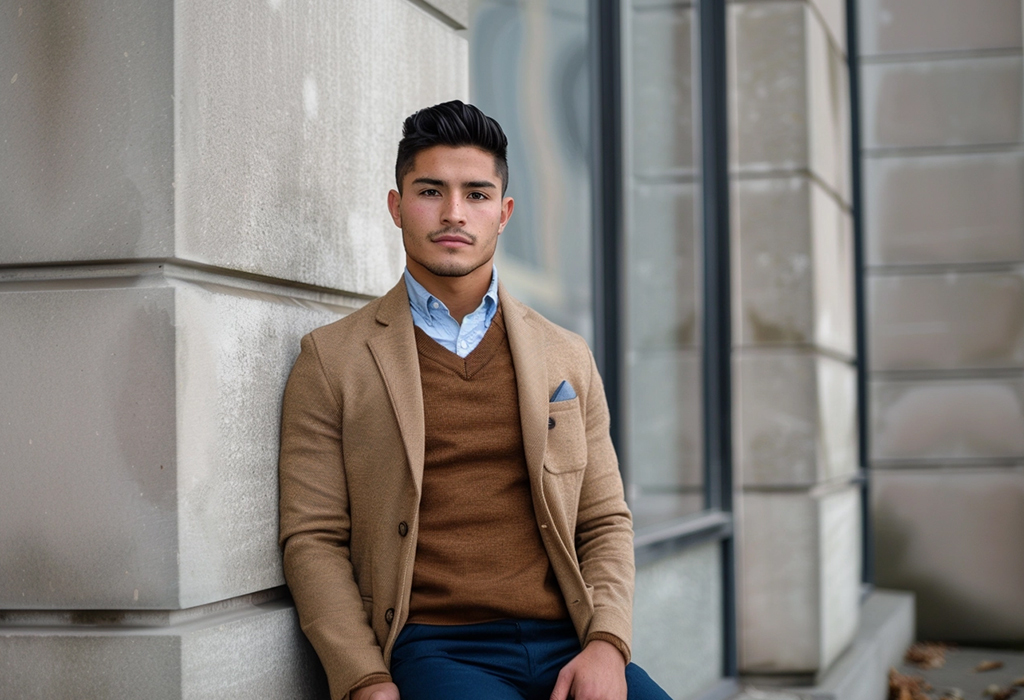

What Is Business Casual?
Throughout a great deal of the twentieth century, most if not all offices required their employees to dress in a manner that was considered “business professional.”
For men, this typically meant a suit, dress shirt, and tie. Depending on the industry, there were oftentimes stricter rules on what types of fabrics, colors, and patterns were deemed acceptable for the decorum of the workplace.
In late 1800s and early-to-mid 1900s England, where much of our western ideas of dress originate, men who held important and distinguished professional positions such as law typically only wore dark, worsted wool suits with conservative shoes, ties, and hats.
The phrase “no brown in town” was coined to refer to the common practice of designating more casual suiting (often in earth tones) for the countryside, while the businessman, working in the city, should only wear darker, more formal attire.
While some rules relaxed in future decades and as American professional style found its own unique footing, the suit-reliant uniform persisted across many industries.
However, many attribute the arrival of “business casual” to Silicon Valley workers in the 1980s, who seemingly chose to shirk traditional office attire in favor of a more relaxed look. Gone were the starched dress shirts and fine wool suits.
Khakis, patterned button-downs, and optional ties became the norm, and soon this phenomenon began to spread to other business sectors across the United States.
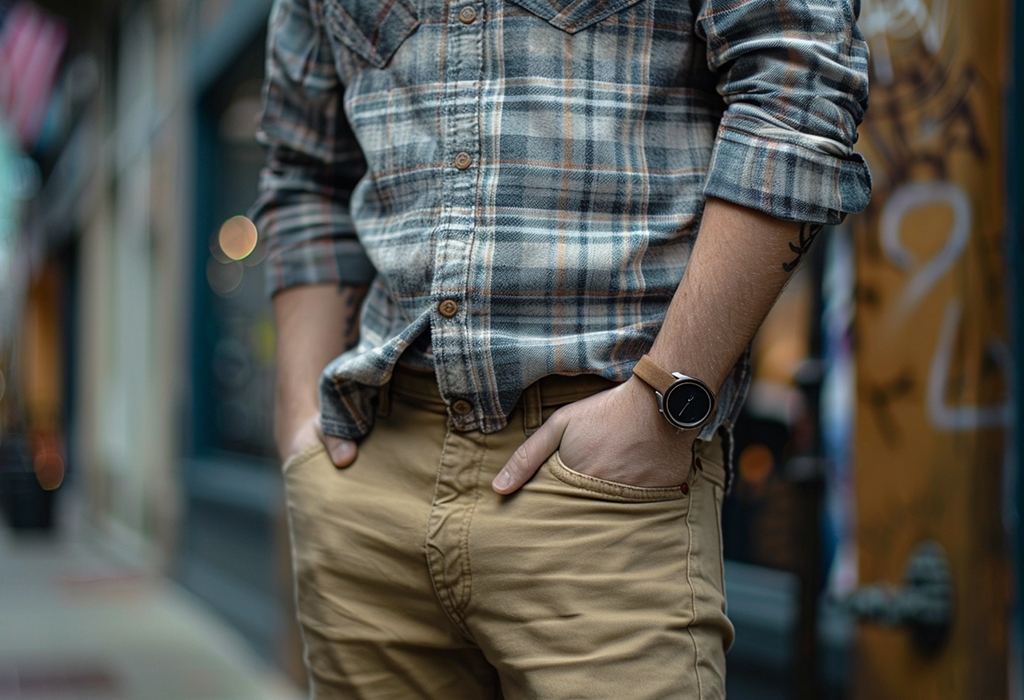

Today, business casual has sometimes come to include jeans and even t-shirts in some circles. But at the same time, a suit can still be considered business casual if dressed down. It’s a bit confusing!
At its core, business casual rejects traditional suiting and ties as the cornerstone of office attire. In its wake, is a somewhat confusing set of loose guidelines, born out of the absence of other, older rules. And in that absence, a somewhat mediocre uniform has prevailed.
Think of the most typical, humdrum office outfit that you know. Or, if you’re sitting at your office desk or at a boardroom meeting, simply look down. Khakis? Some sort of collared shirt worn on its own? Tan shoes or white sneakers?
If that’s accurate, don’t sweat. You’re not committing any fashion crimes. But it can be better. Simply read on to discover how.
Tip #1: Layer Up
One of the problems that often comes up with the typical business casual uniform is that things feel a bit too flat. By abandoning the suit, these outfits often lack an additional layer, which, as most fashion-conscious people are aware, lends an outfit a great deal of visual depth and interest.
You can keep your jeans, khakis, oxford shirts, and the like. The problem isn’t always inherent in those pieces – it’s in what the outfit is still lacking.
The answer? A finishing layer! A casual sport coat or blazer will always work. Some may falsely assume this is considered “dressy,” but if the jacket is in a casual cloth like tweed or linen, it will mesh quite well with the rest of your ensemble.
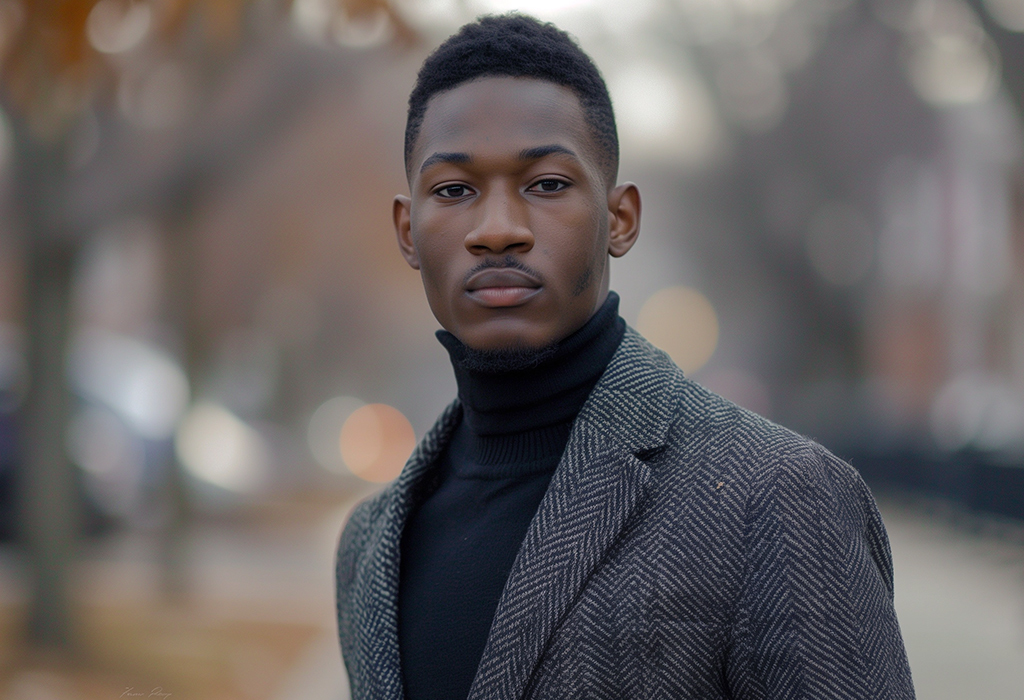

Another way to add an additional layer to your outfits is through quality knitwear. You know, sweaters! Whether you prefer a pullover crew-neck, v-neck, quarter-zip, or cardigan, a good piece of knitwear is guaranteed to add some extra interest to your outfit, and even elevate it.
Tip #2: All Natural, Baby
Yes, we understand that many people find athleisure fabrics to be quite comfortable. But there are certainly other ways to be comfortable without your outfit clearly exhibiting a synthetic look.
There’s nothing inherently wrong with your favorite stretch-fabric slacks, but you can often spot them from a mile away. Natural fiber fabrics often look better and when the clothing article fits you properly, can be just as comfortable, if not more. Additionally, natural fibers tend to last longer.
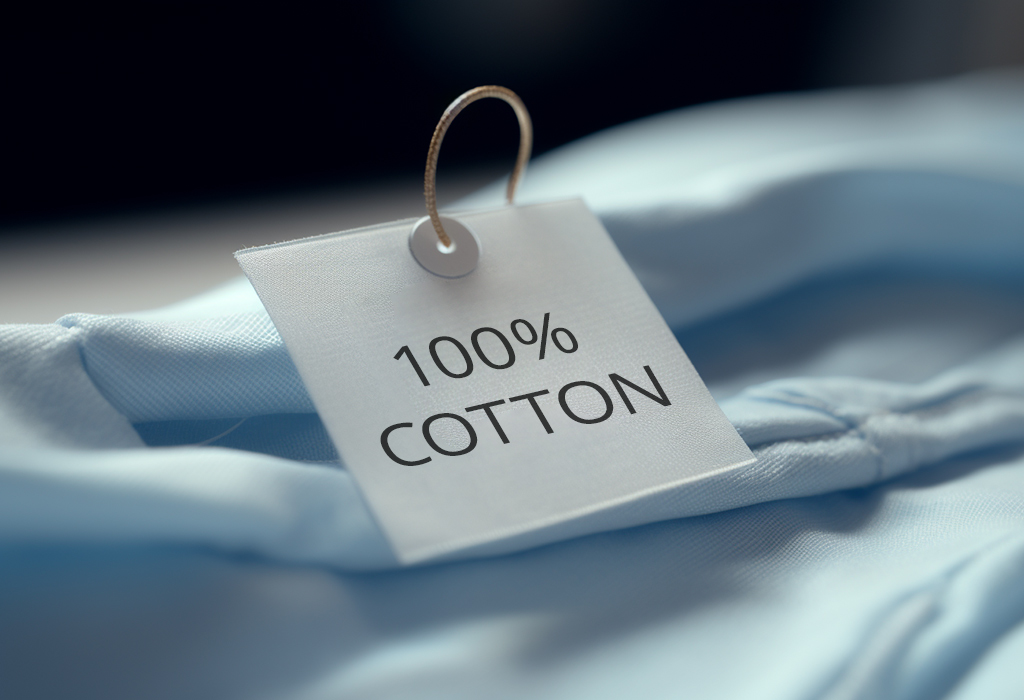

There’s an understated elegance to wearing quality fabrics. Try saving the stretchy stuff for the gym. It’s a subtle change that can go a long way.
Tip #3: The Color/Texture/Pattern Theory
It’s a common fashion idiom that still rings true – if your outfit isn’t interesting through color, then it should be interesting through texture. And if your outfit isn’t interesting through texture, it should be interesting through pattern. And if you’re feeling confident, why not try all three?
One of the larger issues with many business casual uniforms is that they simply scream “generic.” More accurately, they’re often dull in color, flat in texture, or uninspiring in pattern.
Try swapping out one piece for another in a color that you really like. Or perhaps trade your chinos for some corduroy pants. Replace your plain merino wool crew-neck sweater with a Fair Isle knit instead.
Once you begin to understand this trifecta, your style sense will improve dramatically. Oh, and you’re bound to receive some compliments, too.


Tip #4: Do High – Low Contrast Right
You might have tried pairing jeans and a more formal shirt before, and wondered why it didn’t quite work. It can be very tricky to figure out how to combine two pieces on opposite sides of the formality spectrum. But it’s the details of each piece that make or break the deal.
If you’re looking to wear denim with a dressier shirt, make sure the fit of each compliments the other. You don’t want one to be too baggy and the other too billowy. When in doubt, aim for a straight, traditional fit.
It can take some time to acquire the right eye for high – low contrast outfits. A no fail option? Try pairing straight or boot-cut jeans in a classic wash with a western denim shirt, or even a white or blue oxford cloth button down. Top it off with a navy blazer (gold buttons seal the deal!) and you’ve got a great outfit that mixes the best of both worlds with masterful synergy. Just look at Austin Butler. He gets it.
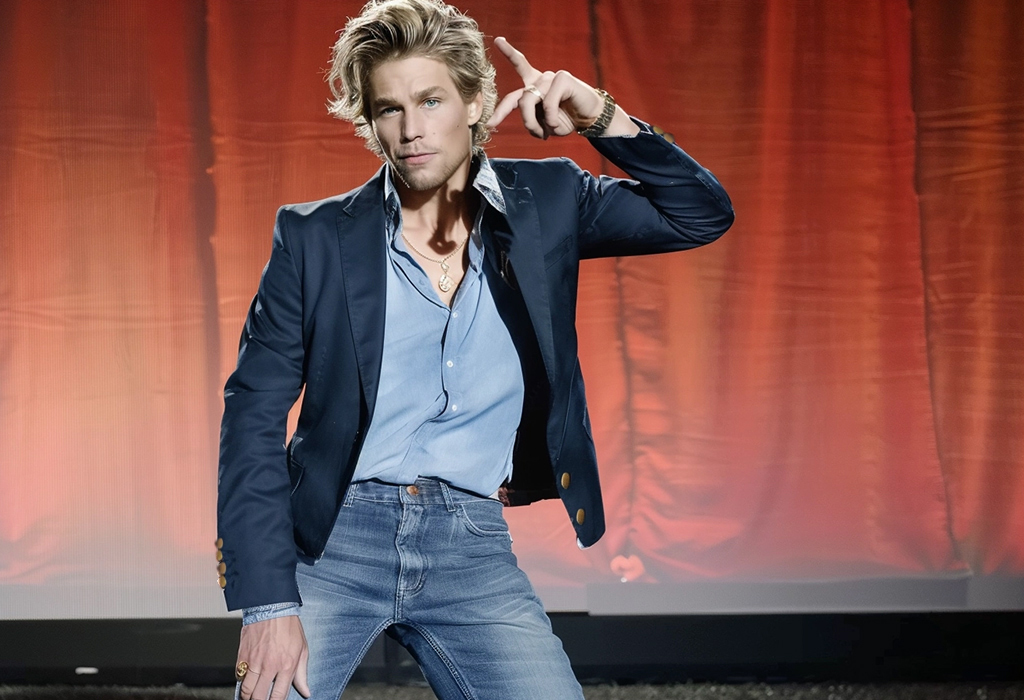

Tip #5: Better Fitting Pants
Outfit proportions are incredibly important. Unfortunately, this is a common stumbling block for lots of guys. Most pants on the market are tight in all the wrong places and have painfully low rises. The result? They make your legs look awkward and short.
It’s time to upgrade your work khakis or jeans. Try going for a more classic, roomy fit and a higher rise. The waist should come up a bit more than you might be accustomed to, and if you want to pack an even bigger visual punch, go for something with pleats. The final result will be a lower half that appears balanced with your upper, and your legs will often look longer, too.
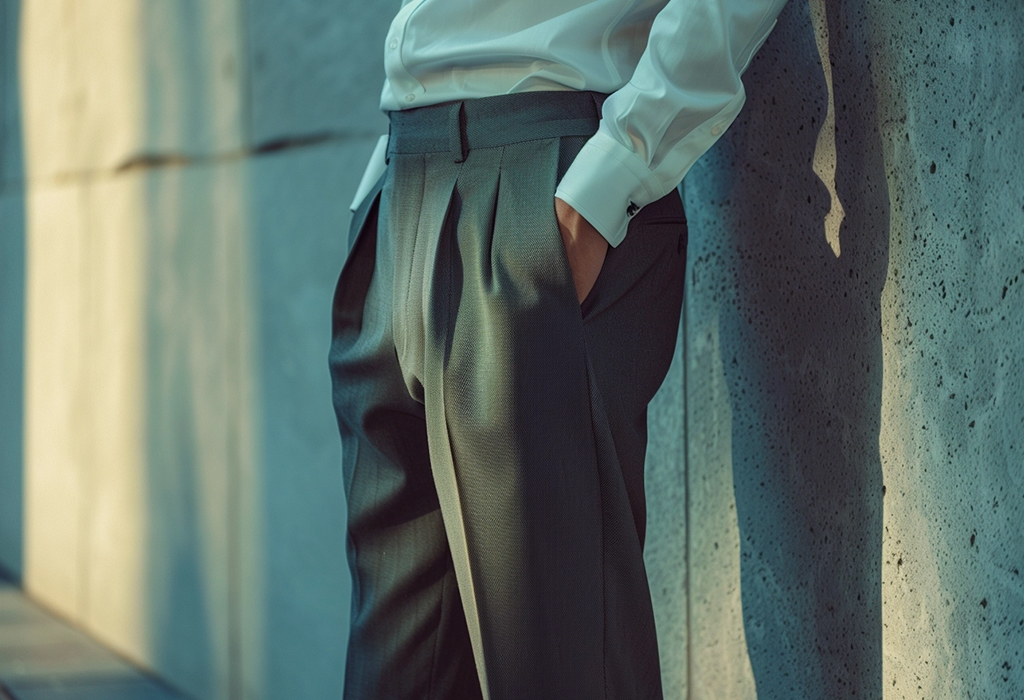

Tapered and skinny fits have their place, but for a lot of body types, they just make you look top-heavy. Your work outfits can appear significantly more balanced with a more generous fit. Try it out and see for yourself!
Tip #6: Start Loafing Around
Picking the right shoes can be a bit challenging when it comes to business casual. In many workplaces, common footwear variations often include tan derbies or dress shoes, white-soled dress shoe/sneaker hybrids, or classic white sneakers.
A subtle way to elevate your business casual outfit without going overboard or overly formal, lies in the versatility and enduring style of the loafer shoe.
Loafers can be dressed up or down with ease, and lend a polished touch to nearly any outfit. Wear them with chinos. Wear them with jeans. Wear them with suits. It doesn’t matter – they just work!
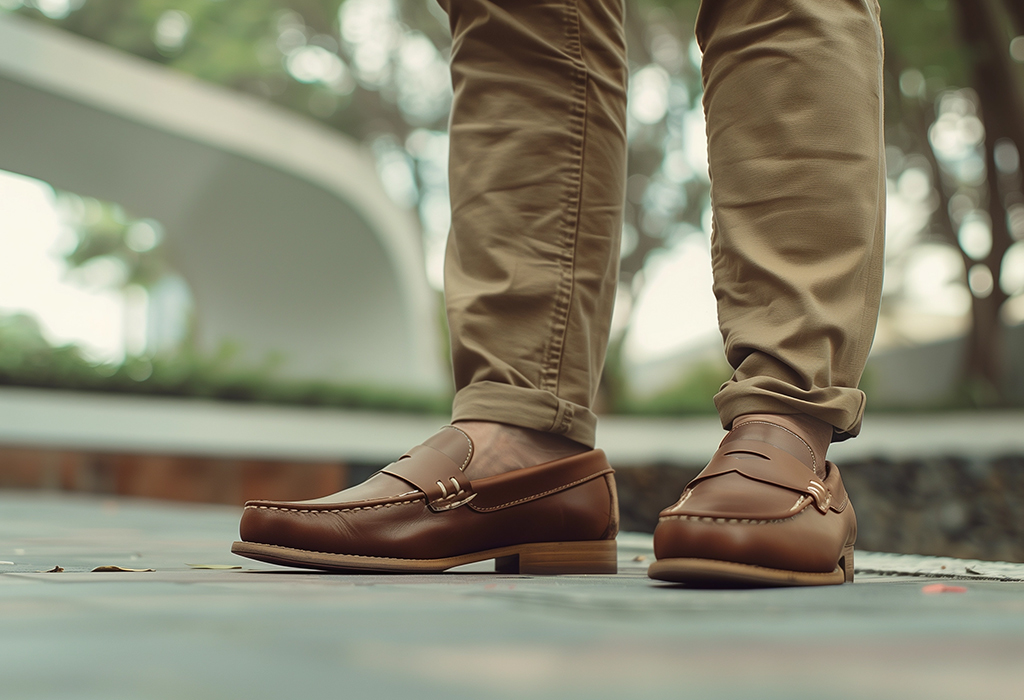

Black and brown loafers will typically be the most versatile colors. A simple, penny loafer is quite neutral, while a more decorated tassel loafer tends to lean a bit more casual.
A loafer with a lug-sole has a slightly more rugged appeal that’s still classy enough for the boardroom. Whichever suits your taste, loafers are an invaluable style hack, especially for business casual.
Tip #7: Upgrade That Bag
Backpacks have their place, but their association with students might take away from an otherwise professional look. If you have a lot to carry, try swapping out your backpack for a leather messenger bag, or even a sleeker, modern take on the briefcase.
Traveling light? Try an elegant leather folio instead. For something in-between, a tasteful tote bag is perfectly appropriate for business casual settings.
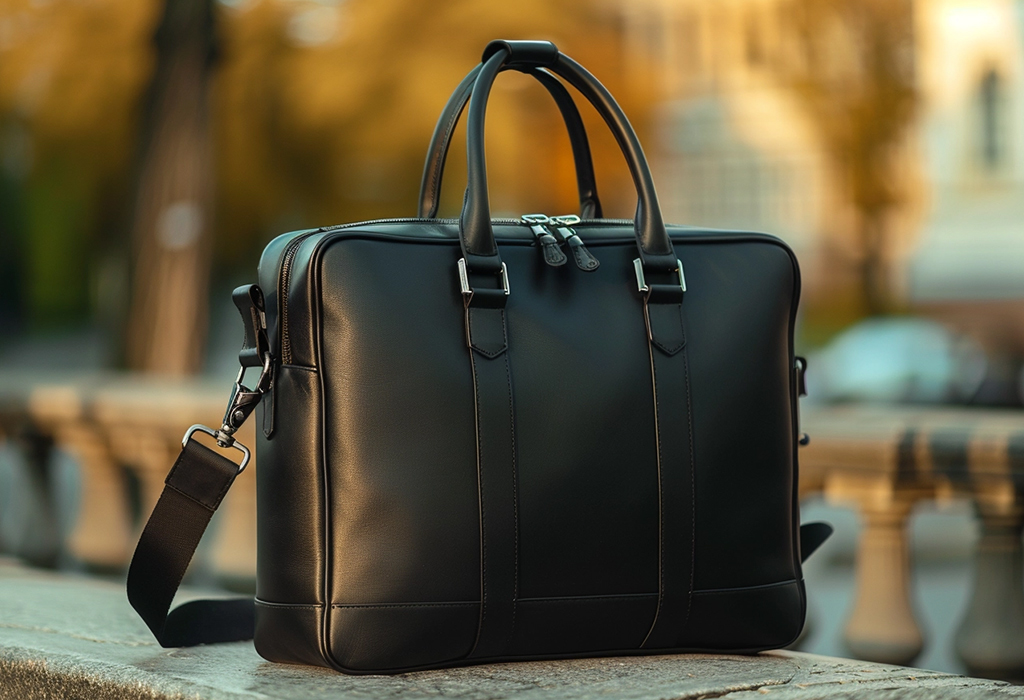

Tip #8: The Polo, Perfected
Polo shirts are classic, but they can be a bit dull if left on their own. Many men opt for polo shirts as a short-sleeved option during warmer months. It can be hard to layer once it gets hot, after all.
However, polos can be elevated, too! Knit polos are a vintage classic that have made quite the comeback in recent years. If fitted correctly, they can be a highly flattering and stylish choice.
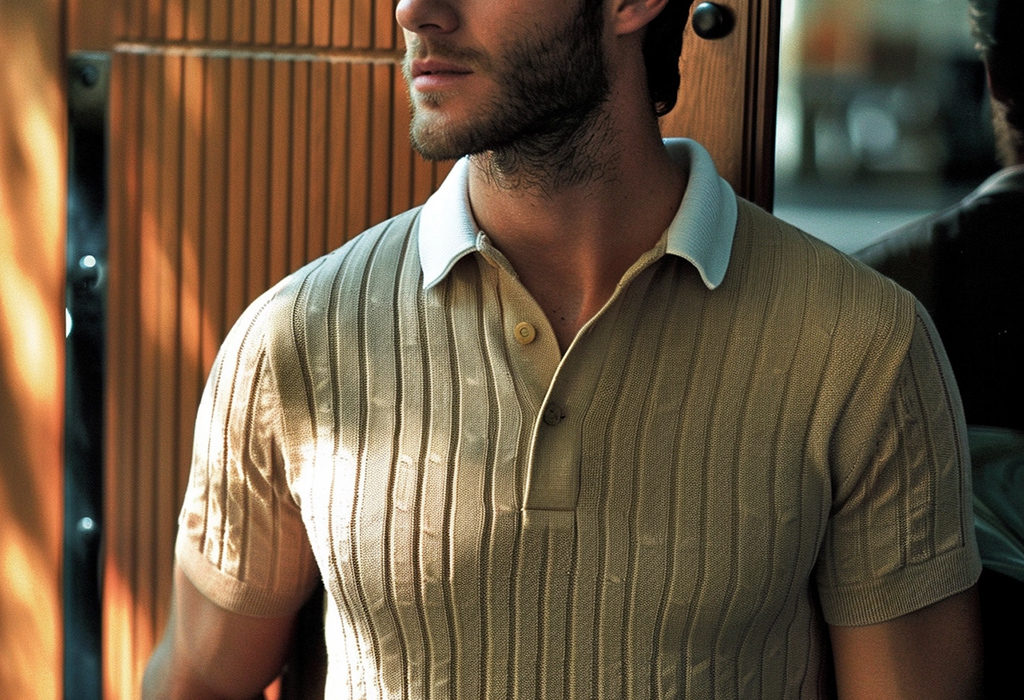

Due to warmer climates inhibiting our ability to layer sometimes, it pays to remember tip #3. If you’re looking to add more texture, consider a cable-knit polo. They have an extra dose of visual appeal while still conforming to the overall configuration of a traditional polo.
Tip #9: Suit Up (Casually)!
When others go low, try going high. In this context, we mean that in terms of office attire. Of course, if no one else is wearing a suit at your workplace, as will often be the case in some business casual environments, make sure you do it correctly.
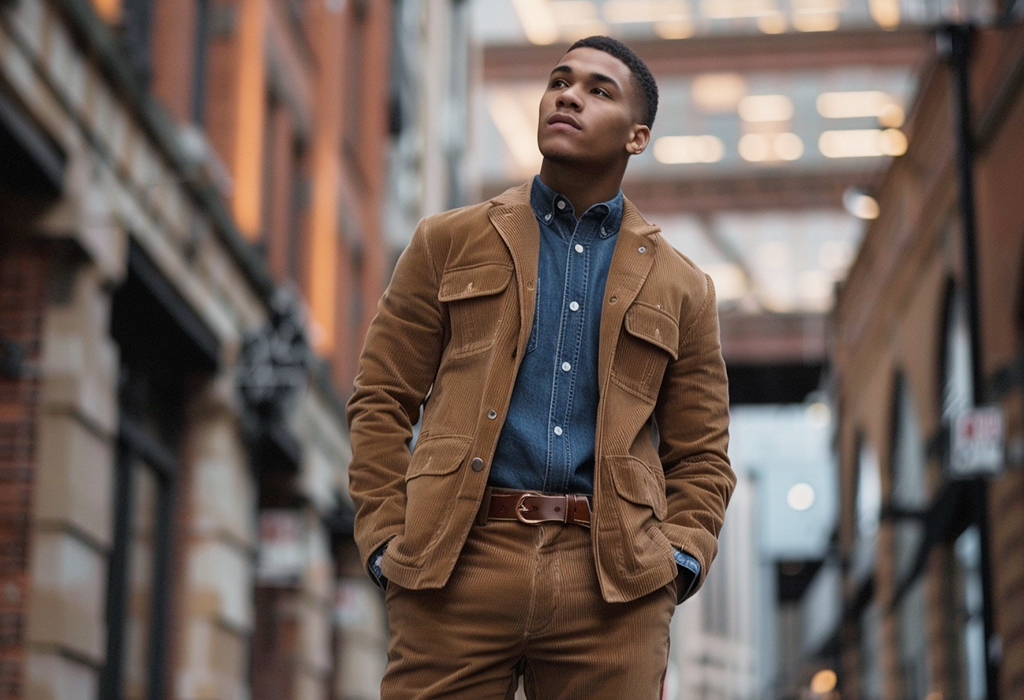

That means – do it casually. Opt for a suit made from a casual fabric such as cotton, linen, corduroy, or tweed. Pair it with an oxford cloth button down or denim shirt to keep things grounded. If you’re feeling a bit bold, add a tie! Just go for a casual option such as a cotton, linen, or knit tie.
Tip #10: Protect Your Eyes – Fashionably
It’s no secret that a full workday spent staring at our computer screens can be harmful to our eyesight. The blue light from most screens can have negative effects on health and sleep. Thankfully, there’s a stylish solution to this that also serves as a major wardrobe upgrade.


Blue light blocking glasses have risen in popularity over the last several years, and they can be just as sharp and tasteful as your favorite reading glasses or shades. They don’t appear much different than a reading pair, but come in all sorts of frames, colors, and sizes. This is one style upgrade that also happens to serve a unique workplace function!
Tying It All Together
By now, hopefully you’ve learned a thing or two about elevating your office attire. Business casual can often be a bit hard to understand, and even trickier to pull off correctly.
In the absence of hard-set style rules that once ruled the professional workplace, the default outfit often lacks a bit of flavor. But through thoughtful choices and careful understanding of how individual items play into one another, you can upgrade your business casual wardrobe in no time.